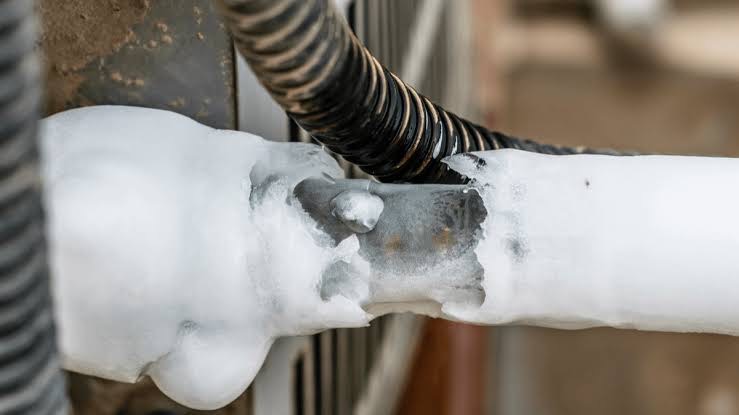Knowing when your air conditioner (AC) needs a gas refill (often referred to as refrigerant or coolant) is crucial for maintaining its efficiency and longevity. Here are some signs that indicate your AC might need a gas refill:
1. Reduced Cooling Efficiency

• One of the most common signs is that the AC is not cooling the room as effectively as it used to. If you notice that it takes longer to cool the room or the air isn’t as cold as it should be, this could be a sign that the refrigerant level is low.
2. Increased Electricity Bills
• Low refrigerant levels can cause the AC to work harder to achieve the desired temperature, leading to higher energy consumption. If you notice a sudden spike in your electricity bills without a corresponding increase in usage, it might be due to your AC needing a gas refill.
3. Ice Buildup on the Evaporator Coils

• When the refrigerant level is low, the evaporator coils can become too cold, causing moisture in the air to freeze on the coils. This ice buildup can reduce the efficiency of your AC and is a clear indicator that you might need a gas refill.
4. Hissing or Bubbling Noise
• A hissing or bubbling noise from your AC unit can indicate a refrigerant leak. If there’s a leak, the refrigerant level will drop, leading to the need for a refill. This noise is often heard when the AC is running.
5. AC Blows Warm Air
• If your AC is blowing warm or room-temperature air instead of cold air, this is a strong sign that the refrigerant level is low and the system is unable to cool the air effectively.
6. Visible Refrigerant Leaks

• Sometimes, you might be able to see refrigerant leaks around the unit. This could appear as oily residue around the refrigerant lines or components. Leaks need to be repaired, and the refrigerant needs to be refilled.
7. AC Runs Continuously
• If the AC unit runs continuously without shutting off, it could be struggling to reach the set temperature due to low refrigerant levels. Normally, the AC should cycle on and off once it reaches the desired temperature.
What to Do If You Suspect Low Refrigerant
1. Professional Inspection
• If you suspect your AC needs a gas refill, it’s essential to contact a professional HVAC technician. They can check for leaks, repair them if necessary, and refill the refrigerant to the correct level.
2. Regular Maintenance
• Regular maintenance can help prevent low refrigerant levels. Have your AC serviced annually to ensure it’s operating efficiently and to catch potential issues early.
3. Avoid DIY Refill
• Refilling refrigerant is not a DIY task. It requires specialized knowledge and equipment, as well as adherence to safety and environmental regulations. Always rely on a certified professional for this job.
By being aware of these signs and acting promptly, you can ensure your air conditioner operates efficiently, providing reliable cooling when you need it most.


Pingback: Generator engine replacement signs - SimplExplainer